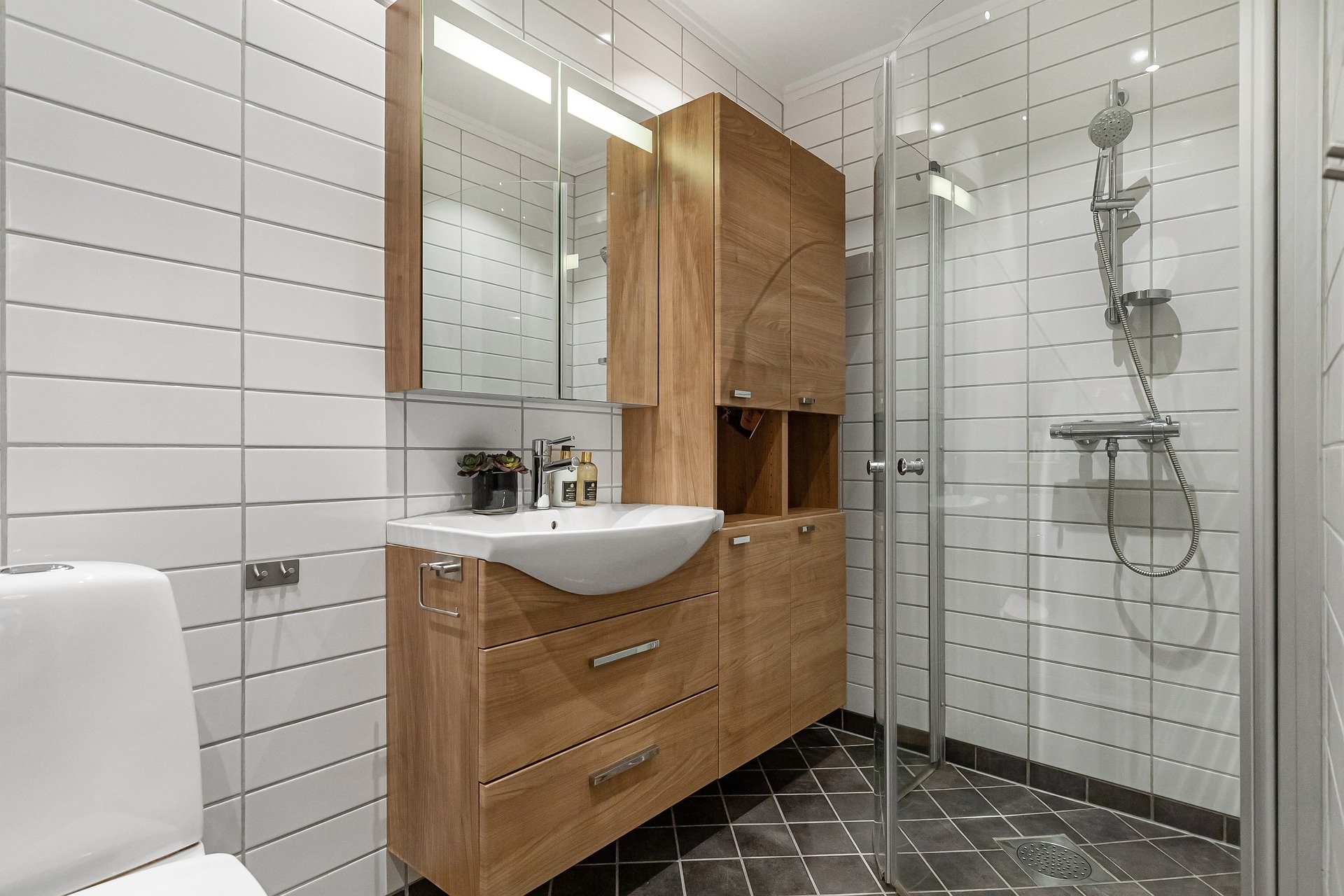The Art of Small Bathroom Design: Maximizing Space and Style
Bathrooms are often the most challenging spaces to design in a home, particularly when square footage is at a premium. The art of small bathroom design has become increasingly important as urban living continues to trend towards compact spaces. Homeowners and designers alike are constantly seeking innovative ways to make the most of limited bathroom areas without sacrificing functionality or aesthetics. This challenge has sparked a wave of creative solutions, from space-saving fixtures to clever storage ideas, all aimed at transforming even the tiniest of bathrooms into functional and beautiful retreats. As we delve into the world of small bathroom design, we'll explore the strategies, products, and design principles that can help turn a cramped washroom into a spacious sanctuary.
In the 1960s and 1970s, designers began to seriously tackle the challenge of small bathroom design. This era saw the introduction of space-saving fixtures like corner sinks and compact toilets. The focus was primarily on functionality, with aesthetics often taking a back seat. However, as design trends evolved, so did the approach to small bathrooms. By the 1990s and early 2000s, there was a growing emphasis on creating bathrooms that were not just functional but also visually appealing, regardless of their size.
Key Principles of Small Bathroom Design
When approaching small bathroom design, several key principles come into play. First and foremost is the efficient use of space. This involves careful planning of the layout to ensure that every inch is utilized effectively. Designers often employ tricks such as using a corner shower or a wall-mounted toilet to free up floor space.
Another crucial principle is the use of light and color. Light colors and reflective surfaces can make a small bathroom feel more spacious and airy. Strategically placed mirrors can create the illusion of more space, while good lighting – both natural and artificial – can brighten up even the smallest of rooms.
Storage is another critical consideration in small bathroom design. Creative storage solutions, such as recessed shelving, over-toilet cabinets, and multi-functional furniture, can help keep the space organized and clutter-free without taking up valuable floor space.
Innovative Fixtures and Fittings
The market for small bathroom fixtures has exploded in recent years, with manufacturers producing an array of innovative products designed specifically for compact spaces. Wall-mounted vanities and toilets have become increasingly popular, as they free up floor space and create a more open feel. Some toilets even come with built-in sinks on top of the tank, combining two fixtures into one space-saving unit.
In terms of bathing options, walk-in showers with frameless glass doors have become a go-to choice for small bathrooms. These showers can be customized to fit into awkward corners or narrow spaces, and the lack of a bulky frame helps maintain a sense of openness. For those who prefer baths, there are now compact tubs designed to fit into smaller spaces without sacrificing comfort.
Smart Storage Solutions
Storage is often the biggest challenge in small bathroom design, but innovative solutions abound. Vertical storage is key, with tall, narrow cabinets and over-the-toilet storage units maximizing wall space. Floating shelves can provide additional storage without the bulk of traditional cabinets, and ladder shelves offer a trendy way to add both storage and style.
For those with extremely limited space, hidden storage options can be a game-changer. Mirrored cabinets serve double duty, while tilt-out hampers can be built into vanities. Even the space under a floating vanity can be utilized with custom drawers or baskets.
The Role of Technology in Small Bathroom Design
Technology has also played a significant role in revolutionizing small bathroom design. Smart toilets with built-in bidets can eliminate the need for separate fixtures, while digital shower controls can be installed outside the shower area to save space. LED lighting can be incorporated into mirrors and cabinets, providing both functionality and ambiance without taking up additional space.
Wireless charging stations built into countertops and waterproof speakers integrated into showerheads are just a few examples of how technology is being seamlessly incorporated into small bathroom designs, adding luxury and convenience without compromising space.
The Importance of Cohesive Design
While functionality is crucial in small bathroom design, aesthetics should not be overlooked. A cohesive design scheme can tie the space together and make it feel larger and more luxurious. This can be achieved through a consistent color palette, complementary textures, and a unified style throughout the fixtures and finishes.
One popular approach is to create a spa-like atmosphere, using natural materials like stone and wood to bring warmth and texture to the space. Another trend is the use of bold patterns or statement tiles to add visual interest without overwhelming the small area.
The Future of Small Bathroom Design
As urban populations continue to grow and living spaces become more compact, the demand for innovative small bathroom designs is likely to increase. We can expect to see further advancements in space-saving technology and multi-functional fixtures. The integration of smart home technology into bathroom design is also likely to expand, with voice-controlled fixtures and personalized settings becoming more common.
Sustainability is another factor that will increasingly influence small bathroom design. Water-saving fixtures, eco-friendly materials, and energy-efficient lighting are already becoming standard in many designs, and this trend is expected to continue and evolve.
In conclusion, the art of small bathroom design is a testament to human ingenuity and creativity. By embracing innovative solutions, leveraging technology, and focusing on both form and function, designers and homeowners can transform even the smallest of spaces into beautiful, efficient, and enjoyable bathrooms. As we move forward, the challenge of small bathroom design will undoubtedly continue to inspire new ideas and push the boundaries of what’s possible in compact spaces.







